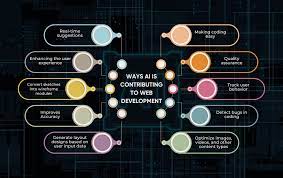Why Your Sales Strategy Fails Before the First Call

Sales success is often viewed as a matter of charisma, smooth talking, and clever closing techniques. While those elements can help, they’re only part of the equation. The truth is, many sales strategies fail before the first call is even made—long before a salesperson has the chance to pitch a product or build rapport.
If your team is struggling to turn prospects into clients, or if conversion rates are consistently below expectations, the problem might not be your people or your product. It might be your pre-call preparation—or lack thereof.
Here’s a breakdown of the most common reasons sales strategies fail before first contact, and what you can do to fix them.
1. You're Targeting the Wrong Audience
One of the biggest mistakes in sales is chasing the wrong leads. You might have a compelling pitch, a polished deck, and a strong closer—but if you’re speaking to someone who doesn’t actually need or want what you're selling, it won’t matter.
Many businesses cast too wide a net in the hope of getting more leads. Unfortunately, more isn’t always better.
Fix It:
Start by refining your ideal customer profile (ICP). Look at your current best customers—what industries are they in? What job titles do they hold? What pain points do they share? Use this data to narrow your targeting and focus your outreach efforts on high-fit prospects.
2. Poor or Nonexistent Research
In the digital age, there’s no excuse for going into a sales conversation blind. If your strategy involves cold outreach without research, you're starting at a major disadvantage.
Lack of research leads to generic messaging, irrelevant value propositions, and wasted time for both parties.
Fix It:
Before you even reach out to a prospect, spend time understanding their company, recent news, industry trends, and potential challenges. Use platforms like LinkedIn, Crunchbase, company websites, and news aggregators to gather context. Tailor your outreach so the prospect feels understood, not targeted.
3. Your Messaging Is Too Generic
“We help businesses grow.”
“Our software saves you time and money.”
“We're the leading solution in our space.”
These are all vague promises that could apply to dozens of companies. If your messaging lacks specificity, it will get ignored. Prospects don’t care about your features—they care about how you solve their problems.
Fix It:
Craft messaging that speaks directly to the pain points and goals of your target audience. Replace broad claims with quantifiable outcomes and real-world examples. Use language your prospects use to describe their own challenges.
4. You’re Not Aligning With the Buyer’s Journey
Not every lead is at the same stage of awareness or readiness. Some are just starting to explore a problem; others are actively comparing vendors. If your outreach doesn’t align with where the prospect is in their decision-making process, it can feel pushy or off-base.
Fix It:
Map your sales approach to the buyer’s journey:
Awareness Stage: Focus on education and problem identification.
Consideration Stage: Offer case studies, whitepapers, and product comparisons.
Decision Stage: Provide demos, pricing details, and ROI calculators.
Understanding where your prospect is mentally will guide the tone, timing, and content of your outreach.
5. You Haven’t Defined a Clear Value Proposition
A weak or unclear value proposition confuses potential buyers and makes it hard for them to justify giving you their time—let alone their money.
If you can’t quickly explain what you do, who it’s for, and why it matters, you’re not ready to make that first call.
Fix It:
Create a concise and compelling value proposition using this framework:
“We help [target audience] achieve [specific benefit] by [how your solution works].”
For example:
“We help B2B marketing teams increase lead conversion by 35% using AI-driven campaign optimization.”
The more focused and outcome-driven your value proposition, the more effective your entire sales strategy becomes.
6. There’s No Pre-Call Strategy or Playbook
Winging it doesn’t work in modern sales. If your team approaches calls without a structured plan—without goals, questions, and insights prepared—they’re going to miss key opportunities.
A disorganized strategy leads to unfocused conversations, missed signals, and prospects who walk away unconvinced.
Fix It:
Before any call, your reps should know:
The prospect’s background and business model
What challenge the prospect might be facing
A clear objective for the call
Key questions to uncover pain points
Common objections and how to handle them
Even a basic playbook dramatically improves consistency and results.
7. No Personalization in Outreach
Today’s buyers can spot a copy-paste message instantly—and they ignore it just as fast. Personalization isn’t a “nice to have” anymore; it’s essential.
Whether it’s email, LinkedIn, or a voicemail, if your first touchpoint doesn’t feel personalized, it won’t stand out.
Fix It:
Use the prospect’s name, mention a recent company announcement or personal post, and connect your solution to something that’s clearly relevant to them. Even 60 seconds of personalization can increase your chances of engagement dramatically.
8. You’re Not Building Enough Trust Upfront
Buyers are skeptical, especially in B2B. If they don’t trust your brand, your rep, or your offer, they won’t engage. Trust is built long before a call ever takes place.
If your online presence is weak, if you don’t have social proof, or if your email domain looks sketchy, even interested prospects will hesitate.
Fix It:
Establish credibility by:
Showcasing customer testimonials and case studies
Having a professional LinkedIn presence
Publishing thought leadership content
Making it easy to verify your business and people
Trust accelerates conversions—and it starts before the call.
9. Ignoring the Role of Marketing in Sales Prep
Sales and marketing often operate in silos, but they shouldn’t. Without alignment, leads might be coming in without proper nurturing, context, or qualification, setting your sales team up for failure.
Fix It:
Work closely with marketing to create lead nurturing campaigns, targeted content, and clear hand-off points. When marketing preps the lead and sales delivers the solution, conversion rates improve naturally.
10. You're Not Tracking What Works (and What Doesn't)
Finally, many sales teams go into outreach without data. They don’t know which messages work best, which industries convert higher, or which actions lead to booked calls.
Without analytics and review, there’s no improvement.
Fix It:
Implement systems to track:
Email open and reply rates
Call-to-demo ratios
Close rates by industry or persona
Objection trends
Use this data to refine your strategy before the next first call. Continuous improvement beats guesswork every time.
Final Thoughts
Sales isn’t just about the call—it’s about everything that happens before it. From defining your audience and sharpening your message, to personalizing your outreach and building trust, the pre-call stage is where most sales are won or lost.
If your strategy is falling flat, don’t rush to blame the close. Take a step back and examine what you’re doing—or failing to do—before you ever pick up the phone. That’s where true sales success begins.
Note: IndiBlogHub features both user-submitted and editorial content. We do not verify third-party contributions. Read our Disclaimer and Privacy Policyfor details.







